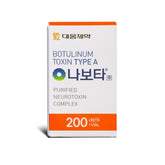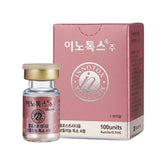Hair Treatment Options for Thinning Hair: A Comprehensive Guide to Restore Your Mane

Understanding Thinning Hair
Thinning hair occurs when the hair follicles shrink over time, resulting in finer, less dense hair growth. Common causes of thinning hair include genetics, hormonal imbalances, stress, poor nutrition, and certain medical conditions. It's essential to identify the underlying cause of thinning hair to determine the most appropriate treatment approach.
Topical Treatments
Topical treatments are a popular choice for addressing thinning hair and promoting hair growth. These treatments typically come in the form of shampoos, serums, and foams that are applied directly to the scalp. Key ingredients to look for in topical treatments include minoxidil, which stimulates hair follicles and prolongs the hair growth phase, and DHT blockers, which help prevent the hormone dihydrotestosterone (DHT) from shrinking hair follicles.
Nutritional Supplements
Nutritional supplements can play a vital role in promoting healthy hair growth and combating thinning hair from within. Supplements containing vitamins, minerals, and essential nutrients such as biotin, vitamin D, iron, and omega-3 fatty acids can support hair health and strengthen the hair follicles. Additionally, supplements that target hormonal imbalances or inflammation may help address underlying causes of thinning hair.
Platelet-Rich Plasma (PRP) Therapy
Platelet-rich plasma (PRP) therapy is a cutting-edge treatment that harnesses the healing properties of the patient's blood to stimulate hair growth. During PRP therapy, a sample of the patient's blood is processed to isolate the platelet-rich plasma, which is then injected into the scalp. PRP contains growth factors that promote tissue regeneration and hair follicle rejuvenation, leading to thicker, healthier hair growth over time.
Hair Transplantation
For individuals with advanced hair loss or significant thinning, hair transplantation may be the most effective long-term solution. Hair transplantation involves transplanting hair follicles from areas of the scalp with healthy hair growth to areas experiencing thinning or balding. Modern hair transplantation techniques, such as follicular unit transplantation (FUT) and follicular unit extraction (FUE), offer natural-looking results with minimal scarring and downtime.
Lifestyle Modifications
In addition to medical treatments, making lifestyle modifications can help support healthy hair growth and prevent further thinning. Lifestyle changes such as reducing stress, maintaining a balanced diet rich in protein and nutrients, avoiding excessive heat and chemical treatments, and practicing good scalp hygiene can all contribute to healthier, fuller-looking hair.
Thinning hair can be a challenging and distressing experience, but with the right treatment approach, it is possible to restore your hair's density and vitality. Whether you opt for topical treatments, nutritional supplements, advanced medical interventions, or a combination of therapies, there are plenty of options available to address thinning hair and promote healthy hair growth. By understanding the underlying causes of thinning hair and exploring the most effective treatment options, you can take proactive steps towards achieving the lush, vibrant hair you desire.





